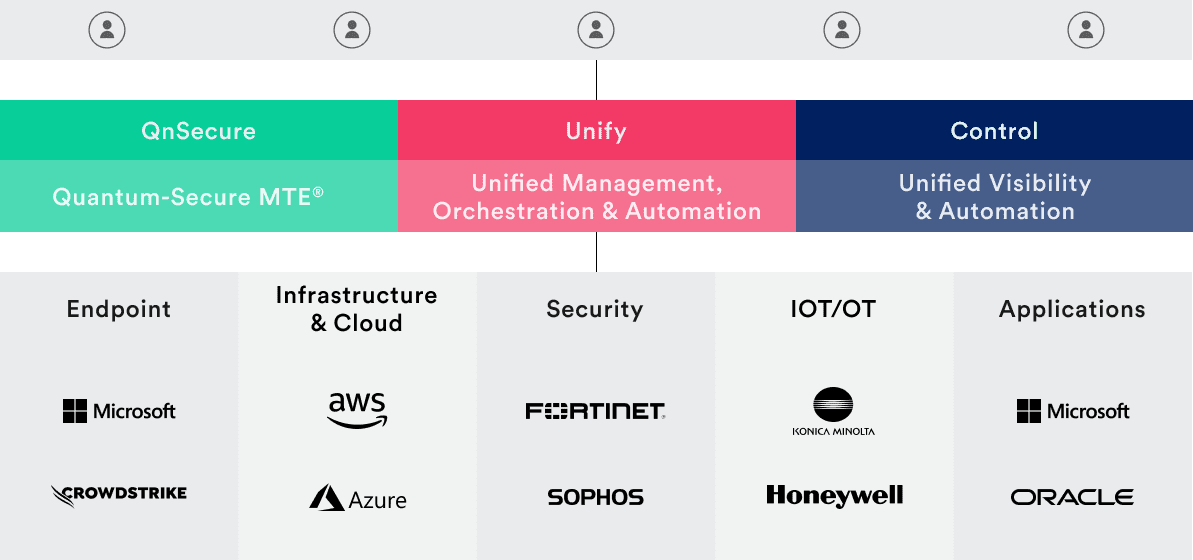Post-Merger Integration (PMI) causes significant challenges from a technology perspective not to mention impact on legal, HR, operations, etc. Efficient consolidation of digital assets, cost control, simplified operational and IT management and stretched resources can be challenging from a time and cost perspective.
Lack of Unified Visibility
The disadvantage of not having a unified view across disparate teams, systems, processes, geographies can add further complexity.
Time-Consuming
The management of digital transformation and change management programmes can be time consuming and costly, causing disruption to the business.
No Centralised Management
A lack of centralised control with disparate networks, systems, applications can limit the opportunities driving synergies and economies of scale.
Increased Risk Framework
With multiple siloed technologies and data transfer/storage, the potential for data leakage and security breaches is increased.
By leveraging these operational efficiencies, the BlockAPT Platform helps organisations streamline their security operations, optimise resources, and achieve a higher level of efficiency in the post mergers and acquisitions environment.

Streamlined Integrations
The centralised management and deep integrations with leading solution providers, consolidates the IT infrastructure of the merged or acquired entities into a unified system. It integrates diverse security tools, policies, and configurations, ensuring a consistent and efficient security framework.
Centralised Management
The centralised management and control capability eliminates the need for managing multiple disparate systems and tools across the merged or acquired organisations. It helps to streamline IT operations, reduce administrative overheads, and improve operational efficiency.
Automation and orchestration
The BlockAPT Platform can automate routine security tasks, such as vulnerability scanning, freeing up resources to focus on higher-value activities.
Role Based Access Control
With the role based access control settings, organisations can facilitate a granular level of access control and identity management ensuring only authorised individuals have appropriate access to resources and sensitive data.
Unified Visibility
The unified view across digital ecosystems provides intuitive intelligence and analytics into network activity, system logs, user access, and other crucial security metrics.
Quantum Secure Communications
Deploy next-gen communication & asset protection for data in motion, or data at rest utilising the award winning MTE® (MicroToken Exchange) technology ensuring an end to end secure digital infrastructure.

Enhanced Operation and Security Management
The platform can identify and mitigate vulnerabilities, monitor network traffic, and automate workflow processes to protect against potential threats and attacks. It streamlines operations, reduces complexities, and enhances operational efficiencies.
Unified Visibility
Enable more effective cross-collaboration between IT, Operations, Compliance, Risk and Legal teams with unified visibility, customisable dashboards and simplified reporting.
Rapid Deployment and Integration
With deployment within hours instead of weeks, organisations can accelerate their internal programmes, ensuring that security systems are up and running smoothly, reducing downtime, and enhancing operational efficiencies.
Robust Access Control
The BlockAPT Platform centralises user access authentication, permissions and authorisation processes, reducing complexities, whilst supporting compliance processes and data integrity.
Risk Mitigation
Leverage insightful risk assessments, vulnerability scans, and automated penetration tests to identify weaknesses and proactively address them, reducing the risk of security incidents and breaches.
Cost Savings
By reducing manual effort, eliminating redundancies, optimising resource allocation, and controlling digital assets on premise or in the cloud through a single platform, organisations can achieve greater cost-effectiveness and economies of scale in their security operations.